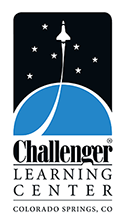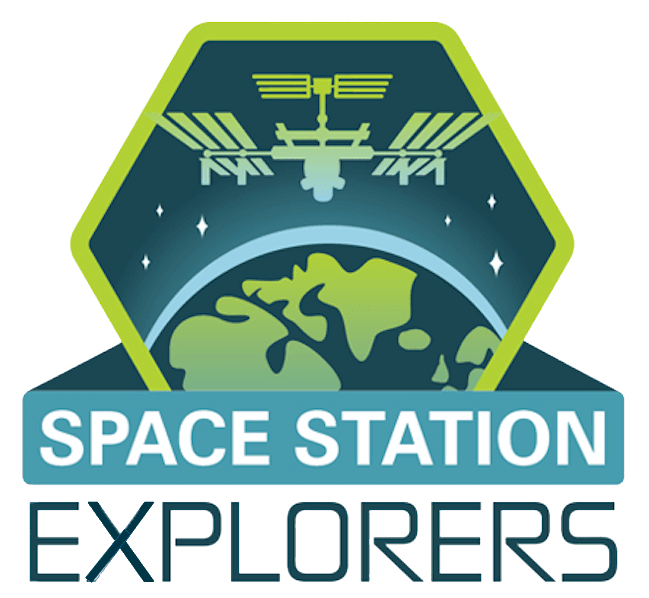Planetarium Programs
Options
| LOCATION | Your School* | Challenger Colorado |
| DESCRIPTION | We bring our inflatable, portable planetarium to you. Donated by the Bruni Foundation, this portable time machine allows students to experience the night sky and the solar system no matter what the season, weather or time of day. | The new Mikkelson Planetarium offers live educator-led planetarium shows at our amazing new Challenger Learning Center in northeast Colorado Springs. |
| SHOW OPTIONS | Grade-level standards-based night sky presentations | Choose from any of our 45-minute shows listed below |
| CAPACITY | Up to 32 | Up to 40 |
| LENGTH | 30 minutes | 45 minutes |
| PRICE | Half-Day: $550 Full-Day: $850 | Single-Show Price: $150 |
*Requires a 20 foot by 20 foot quiet area with 12-foot ceilings and a minimum of two 110V power plugs.
Elementary (grades K - 5)
One World, One Sky (recommended: kindergarten)
Students explore the night sky with Big Bird, Elmo, and Hu Hu Zhu, a new friend from China. This full-dome video from Sesame Street and the National Science Foundation shows students how to find the Big Dipper and North Star, as well as taking them on an imagination-fueled trip to the moon.
ESS K.3.1 Patterns are observed when measuring the local weather, including how humans and other organisms impact their environment.
Patterns in the Night Sky: The Sun, the Moon, and the Stars (recommended: grade 1)
ESS 1.3.1 Patterns of movement of the sun, moon and stars as seen from Earth can be observed, described, and predicted.
The Changing Shape of the Earth, Moon, and Planets (recommended: grade 2)
ESS 3.2.2: Wind and water can change the shape of the land. The resulting landforms, together with the materials on the land, provide homes for living things.
Weather & Climate: Going to Space To Learn About Earth and its Neighbor (recommended: grade 3)
Students learn how satellites help scientists study and predict the weather, the relationship between weather and climate and the factors that influence them, and how Earth’s weather and climate compare to other planets.
ESS 3.3.1 Climate describes patterns of typical weather conditions over different scales and variations; historical weather patterns can be analyzed.ESS 3.3.2 2. A variety of weather hazards result from natural process; humans cannot eliminate weather-related hazards but can reduce their impacts.
Electromagnetic Radiation: The Light in Space (recommended: grade 4)
While exploring the night sky and planets in our solar system, students learn about light-creating and light-reflecting bodies; why some objects are brighter than others; and how we know so much about stars even though we have never been to any of them!
PS 1.6.1: Students can answer the questions: What is light? How can one explain the varied effects that involve light? What other forms of electromagnetic radiation are there? PS 1.6.2: Electromagnetic Radiation: An object can be seen when light reflected from its surface enters the eyes. PS 1.7.1: Students can answer the question: How are instruments that transmit and detect waves used to extend human senses?.
Patterns and Hypothesis: Science is Just Patterns (recommended: grade 5)
Students begin with a discussion on the scientific method and how that applies to the patterns in the night sky. After a brief tour of the nighttime sky, students learn about how to navigate the night sky using grids. Finally, students launch into the universe itself to realize the magnitude of its size.
ESS 3.2.1: Students can answer the question: What are the predictable patterns caused by Earth’s movement in the solar system EES: 3.1.1: Scale, Proportion and Quantity: Natural objects exist from the very small to the immensely large.G 4.5.1: Use the first quadrant of the coordinate plane to represent real-world and mathematical problems.G 4.5.4: Use the first quadrant of the coordinate plane as a tool to represent, analyze, and solve problems.
Middle School (grades 6 - 8)
The Physics of Our Planet and Solar System
From motion and gravity to weather and climate, students learn about a range of Earth and space science concepts while exploring the night sky, viewing Earth from space, and venturing out into the solar system.
ESS MS.3.1 Motion is predictable in both solar systems and galaxies. ESS MS.3.2 The solar system contains many varied objects held together by gravity. Solar system models explain and predict eclipses, lunar phases, and seasons.
High School (grades 9 - 12)
How a Star is Made (recommended: grades 8-10)
Certain stars appear brighter and larger than others. Why? Starting with our own Sun, students are led on a discussion of stellar formation and the various properties of other stars. Students are then flown to the Sun to look at how we can use satellites to help predict different solar phenomena. Physical Science Focus
ESS 3.1.a: Develop a model based on evidence to illustrate the life span of the sun and the role of nuclear fusion in the sun’s core to release energy that eventually reaches Earth in the form of radiation. ESS 3.1.c: Communicate scientific ideas about the way stars, over their life cycle, produce elements.
Earth's Active Past (grades 9-12)
What are the origins of the Moon? Why does earth have tectonic activity? After a brief tour of the nighttime sky, students will launch into the solar system to learn about the geologic past of the Earth and other planets, as well as discuss how that past impacts our future. Earth Science Focus
ESS 3.3.a: Evaluate evidence of the past and current movements of continental and oceanic crust and the theory of plate tectonics to explain the ages of crustal rocks. ESS 3.3.b: Apply scientific reasoning and evidence from ancient Earth materials, meteorites, and other planetary surfaces to construct an account of Earth's formation and early history. ESS 3.5.a: Develop a model to illustrate how Earth’s internal and surface processes operate at different spatial and temporal scales to form continental and ocean-floor features.
The Death of a Star (grades 10-12)
Is our Sun going to blow up? Students are led on a discussion of stellar death, from planetary nebulas to black holes. Students are then shown different methods of observing these objects, including Gravitational Waves and LIGO! Astrophysics Focus
ESS 3.1.b: Construct an explanation of the Big Bang theory based on astronomical evidence of light spectra, motion of distant galaxies, and composition of matter in the universe. PS 1.3.a: Develop models to illustrate the changes in the composition of the nucleus of the atom and the energy released during the processes of fission, fusion, and radioactive decay.



























